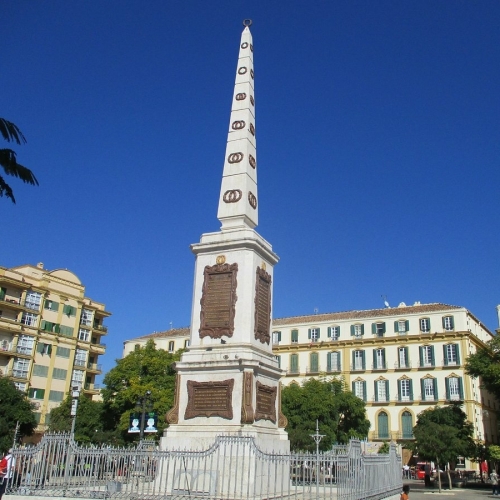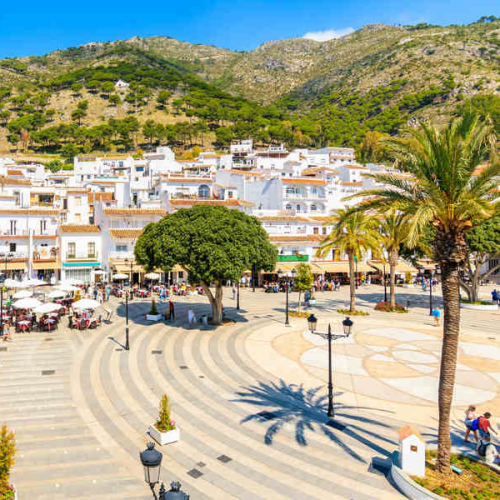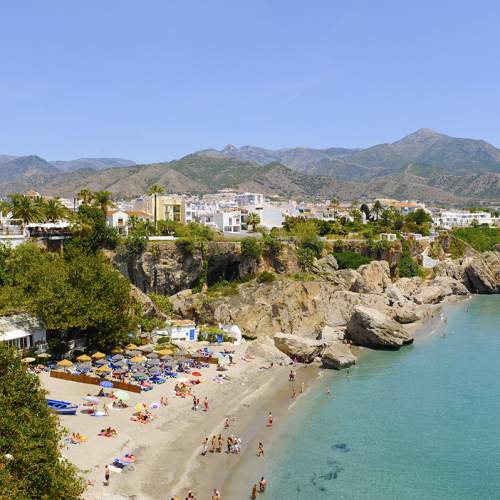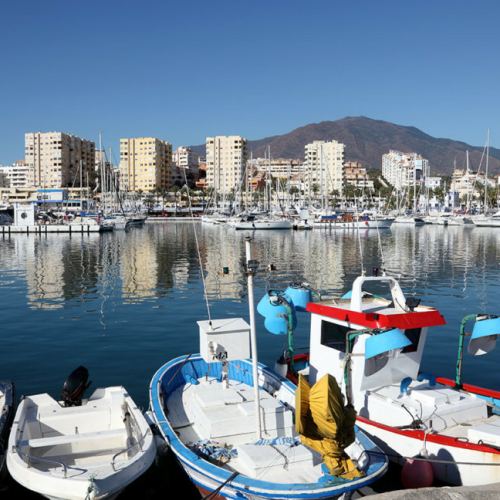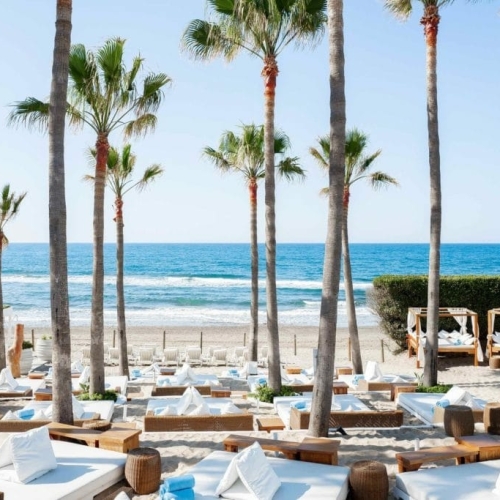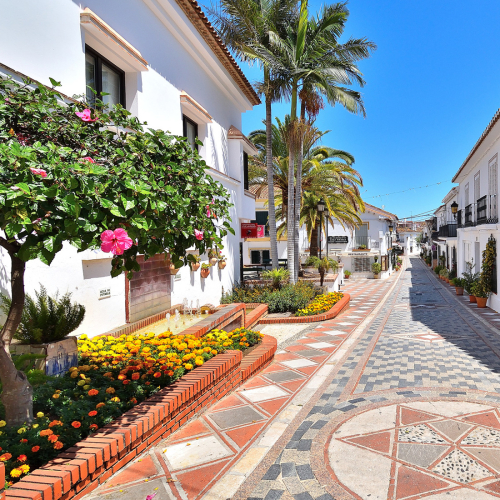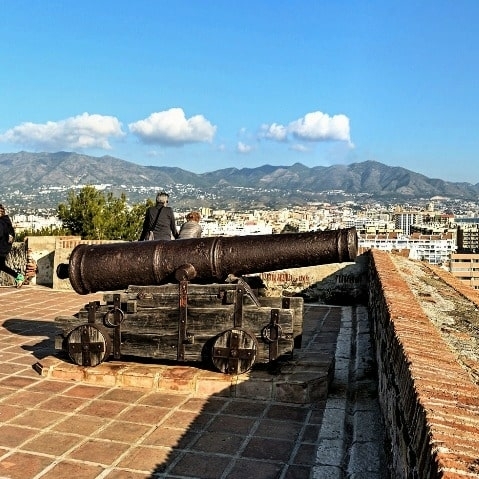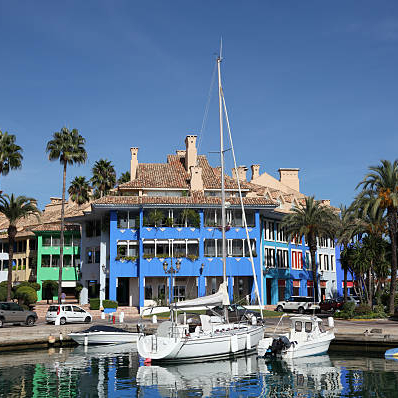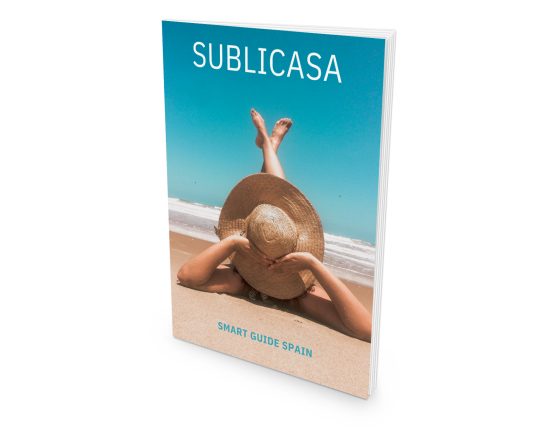Marbella - Rio Real Golf Course
The Rio Real golf course was designed by the legendary Javier Arana, who is considered the greatest Spanish designer of all time. Located in the most prestigious area of Marbella, just 5 minutes from the city center, this golf course was opened in 1965. The course runs along the river Rio Real, from which it takes its name, and forms an integral part of the course, until on the Mediterranean Sea.
Its design makes it a spectacular golf course. 18 holes (par 72) and more than 6,000 m in length. The course has a great variety of different tree species: pines, palms, casuarinas, olive trees, cypresses, etc. making it the ideal place to play golf, both on foot or with the use of golf buggies.
Marbella – La Zagaleta
La Zagaleta is an exclusive residential estate with almost 900 hectares of beautiful natural hills and valleys, in a stunning position overlooking the sea, just ten minutes from Marbella. Inaugurated in 2005, Zagaleta New Course truly combines golf with nature thanks to the designer Gaunt & Marnoch, who have taken great care to ensure that the course blends in with its beautiful surroundings. This Par 70 is a playful 18 holes with beautiful obstacles and doglegs.
Marbella – Golf and Country Club
Marbella Golf & Country Club was designed by the legendary Robert Trent Jones Senior and is just a 5 minute drive from the cosmopolitan city of Marbella. Opened in 1994, 6,000 meter 18-hole links golf course with a par of 72, imaginatively designed to respect the natural terrain.
Marbella – Las Brisas Golf Club
Real Club de Golf Las Brisas is, given its royal status, an absolutely outstanding golf course located in the well-known Golf Valley to the west of Marbella. Designed by Robert Trent Jones, the course opened in 1968 and has hosted many major international golf events. A multitude of provocative water hazards, elevated greens and a wonderful variety of vegetation make playing on this well-maintained course an absolute pleasure.
Marbella - Los Flamingos Golf
Los Flamingos Golf is an 18-hole golf course of 5,714 metres and was designed by the prestigious architect Antonio García Garrido, who is known for his meticulous landscaping. Here you will find a wide variety of trees, as well as a breathtaking view of the Mediterranean Sea. This golf course, together with Alferini Golf and Tramores Golf Club, is part of the Villa Padierna Golf Resort.
Marbella – La Cala America
La Cala Resort is one of the largest golf resorts with three 18 hole golf courses, the only David Leadbetter Golf Academy in Spain and a high quality Par 3 six hole course. Golf course architect Cabell B. Robinson. Campo America may be more difficult than the shorter Campo Asia, but both require great tee accuracy and careful club selection. Meanwhile, the third golf course, Campo Europa, uses the river Ojen to make the course distinctive. The layout creates many water hazards.
Marbella – Santa Maria Golf & Country Club
Santa Maria Golf & Country Club is located east of Marbella. Opened in 1991, Santa María Golf was previously a 9-hole golf course designed by Antonio García Garrido. After finishing the second nine, the course is now set in two valleys in the hills in an environment with beautiful views. The golf course is not too difficult to play with its wide fairways, especially on the back nine.
Marbella – Santa Clara Golf
Santa Clara Golf opened its doors in July 2001. This golf course is located just a few kilometers east of Marbella. Enrique Canales designed this course in ''Park-land'' style and although Santa Clara Golf is located in an undulating area, it is relatively forgiving. Probably the most difficult hole is the 8th (par 5 - 506 metres). The tee box is located on the top level of the course. The narrow fairway of this hole curves all the way down to sea level.
Sotogrande – Valderrama Golf Club
Valderrama is a 6356 meter par 71 with no hole less than championship quality, but it can be fully enjoyed by players of all handicaps, thanks to the genius of Robert Trent Jones, Senior, who is regarded by many as the leading golf architect of his time.
Sotogrande – La Reserva Club
La Reserva Golf Club is the latest gem to join the world class Valderrama, Sotogrande and San Roque golf courses. La Reserva golf course is an 18-hole course with 5 sets of tees and views down to the Mediterranean Sea. The designer Cabell B. Ronson created a long golf course with wide fairways and large greens. Water hazards are present in several holes.
Sotogrande – San Roque New Golfcourse
The new San Roque Golfcourse perfectly complements the layout of David Thomas who transformed the site in the 1980s and put San Roque on the world stage of golf.
The San Roque New course is laid out over 100 acres, a vaguely triangular-shaped stretch parallel to the ocean and with a nature reserve running along one boundary. To complicate matters, the centerpiece is a huge mound adorned with cork and oak trees.
Estepona Golf
The Estepona golf course is renowned for its immaculate greens, its spacious fairways and tees, as well as the beautiful views over the countryside and the Mediterranean Sea. It is situated on an elevation and is naturally quite hilly with numerous palm trees, olive trees and eucalyptus trees. The golf course has a reputation for providing impeccable service and excellent value for money! Hole No. 10 is their signature hole, and despite being a short par 4, players will have to make a challenging stroke across the water to the green. Like many golf courses on the Costa del Sol, it tends to be very busy, but thats normal when considering playing on a course like this!
Estepona - Valle Romano Golf
Valle Romano Golf & Resort, opened in 2010, is located in Estepona, overlooking the sea and Sierra Bermeja, and 50 minutes drive from Malaga airport.
The 18-hole course, par 71, with 6,213 metres, was designed by the prestigious American designer Cabell B. Robinson.
Estepona – El Paraiso
The El Paraiso golf course is located in the valley in the foothills of the Sierra Bermaja mountains. The fairways include winding streams and flora such as oleanders, jacarandas and mimosas. The clubhouse is located in the middle of the course and calls the 6th hole its ''Signature hole'' which has a par 5 dogleg links and needs the drive to avoid two bunkers on either side. The club also offers a golf school with lessons for beginners to professionals and in a wide variety of languages.
Estepona – Finca Cortesin Golf
Finca Cortesin is an 18-hole, par 72 championship golf course, measuring 7,000 metres from the back tees and featuring over 100 strategically placed bunkers.
Designed by Cabell Robinson and landscaped by Herald Huggan.



